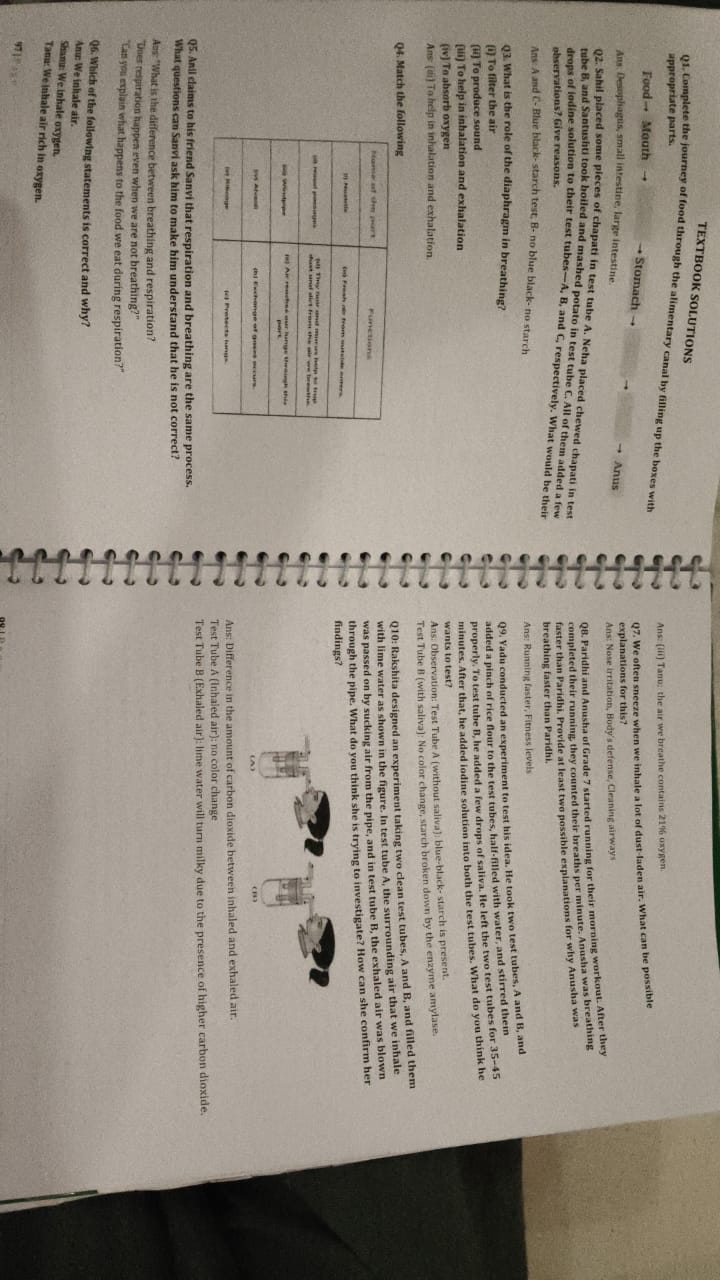chapter 9 life processes in plants
1/3
There's no tags or description
Looks like no tags are added yet.
Name | Mastery | Learn | Test | Matching | Spaced |
|---|
No study sessions yet.
4 Terms

Ingestion
Digestion
AbsorptionAssimilation
Egestion
Ruminant
The process of taking food into the body through the mouth.
The breakdown of complAbex food substances into simpler substances.
The uptake of soluble substances produced during digestion by the cells in the body.
The use of simple substances to build complex substances required by the body.
The elimination of undigested food from the body.
Finger-like projections on the inner lining of the small intestine that increase the surface area for efficient absorption.
A plant-eating animal that brings back swallowed food into the mouth to chew it again.
0.Alimentary Canal / Digestive Tract
0.Digestive System
1.Mouth / Buccal Cavity
2.Esophagus (Food Pipe)
3.Stomach
4.Small Intestine
5.Large Intestine
6.Anus
7.Pancreas
8.Salivary Glands
0.5
A canal through which food passes inside the body. It includes:Mouth
Esophagus
Stomach
Small Intestine
Large Intestine
Anus
0.The combination of the alimentary canal and digestive glands that digest food.
1.
The opening where food enters and digestion begins.2.
A tube that carries food from the mouth to the stomach.3.
A muscular organ where food is churned and mixed with digestive juices.4.
The main site of digest
5.Absorbs water and forms undigested food into feces.6.
The opening where feces exit the body.7.
Produces bile to help in digestion of fats.8.
Secretes digestive enzymes that help digest proteins, carbohydrates, and fats.9.
Produce saliva which contains enzymes that begin the digestion of starch.
Respiration
Breathing
Diaphragm
Lungs
Alveoli
Aerobic Respiration
Anaerobic Respiration
Mechanism of Breathing
Respiration in Fish
Respiration in Earthworms
.
The process of releasing energy from food, usually using oxygen.
The process of inhaling oxygen and exhaling carbon dioxide.
A muscular structure that helps in breathing by contracting and relaxing.
Organs where gas exchange occurs—oxygen in, carbon dioxide out.
Tiny air sacs in the lungs where exchange of gases happens.
Respiration using oxygen, producing more energy.
Respiration without oxygen, producing less energy.
Includes inhalation (air in) and exhalation (air out) with help from diaphragm and rib muscles.
Fish use gills to extract oxygen from water.
Happens through their moist skin by diffusion.
What is the role of villi in the small intestine?
What is the function of saliva in digestion?
What is peristalsis?
What is the function of the large intestine?
What are ruminants?
What is rumination?
What are the four chambers of a ruminant’s stomach?
How is digestion different in birds?
What is the function of bile?
How does food move through the alimentary canal?
Villi increase the surface area of the small intestine to help absorb digested nutrients into the blood.
Saliva contains enzymes (like salivary amylase) that begin the digestion of starch into simple sugars.
Peristalsis is the wave-like muscular movement that pushes food through the digestive tract.
The large intestine absorbs water from undigested food and helps in forming feces.
Ruminants are herbivorous animals that chew the cud, such as cows, goats, and sheep.
Rumination is the process of bringing back swallowed food (cud) to the mouth for re-chewing.
The four chambers of a ruminant's stomach are: rumen, reticulum, omasum, and abomasum.
Birds have a crop for food storage and a gizzard for grinding food since they lack teeth.
Bile helps break down fats into smaller droplets (emulsification) and is produced by the liver.
Food moves through the alimentary canal by peristalsis, a series of muscle contractions.
Let me know if you'd like to combine these Q&A into a flashcard-style layout or a printable format!